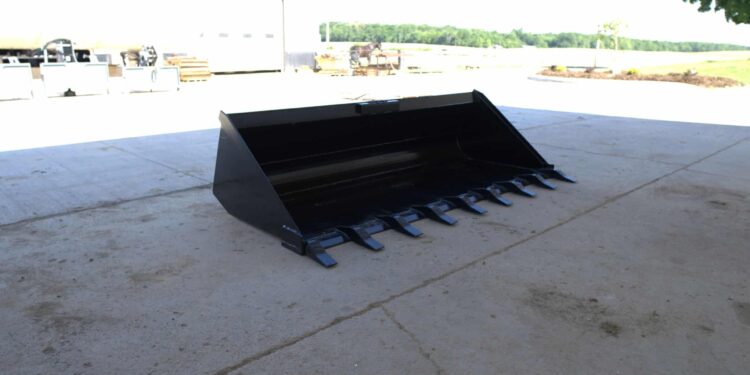Farming is one of the oldest and most important occupations in the world: it’s the reason that we developed into societies and became one of the most prolific species on the planet. While technology has changed immensely since humans first began to herd animals and tend crops, the need for maximum yield with minimum effort stays the same. It’s an exciting business to get into, but it can also be very daunting if you didn’t grow up with a strong agricultural background.
There are many excellent tutorials out there about how to start a farm, and once you understand the basics, it’s time to dive into detail about the equipment you’ll actually be using. One of the most versatile pieces of equipment you can own is a skid steer, which allows you to use a variety of attachments to complete different tasks, whether that’s scooping up compost or lifting pallets. A quintessential skid steer attachment is the bucket, as it can be used for nearly anything that requires transporting loose particles like dirt, manure, or feed.
It seems easy enough to simply purchase a bucket that’s sized for your particular skid steer model, but not so fast – there are numerous skid steer buckets on the market, and each one has a slightly different use. Let’s look at five different types of skid steer buckets so that you can understand which model will be right for your own operation.
Low profile buckets
These are the quintessential skid steer buckets, popular for any number of uses. If you’ve ever seen a skid steer bucket before, the low profile bucket was likely the one being used, as it’s incredibly versatile and will work well for a variety of different projects. Most specifically, the low profile skid steer bucket is useful for landscaping and construction, such as moving loose earth or gravel. It has a low bucket capacity compared to other types, but it’s an excellent choice for your first skid steer bucket, and you can always purchase more attachments as necessary.
Low profile buckets with teeth
This model combines the easy maneuverability of a low profile bucket with the digging power of larger tools, making this an excellent choice for those who need to dig into materials and pull them up. For example, a toothed bucket is perfect if you’re shoveling out densely packed soil to transport elsewhere. The teeth help bite into the soil and churn it loose, and the clods can then be hefted up into the bucket. If you’re not quite sure what your farm might face in the future, a low profile bucket with teeth is a great investment: it can still be used just like a normal low profile bucket, but it can also help loosen up denser materials, such as if you’re breaking virgin soil on a new area of the farm.
Mid size buckets
If you’re concerned that a low profile bucket won’t handle enough, you can always go for the middle ground: the mid size skid steer bucket, which is perfect for lightweight, low density materials like mulch, compost, feed, or snow. This model is especially good in colder climates, as it can be used both for shoveling out your farm after a snowstorm and moving feed to your hungry animals all throughout the year.
High volume buckets
When you need to move a lot of low density material quickly and accurately, a high volume skid steer bucket is exactly what you need. This model can carry much more than a low profile bucket, which makes it perfect for operations that have a great deal of compost, manure, or feed to shovel around on a daily basis. Many models of this have a see-through screen above the quick attach, which can prevent materials from bouncing up and shattering the windshield of the steer skid; this is especially helpful if you’re working with slightly harder materials or need to go further distances across bumpy terrain.

Enclosed bottom grapple buckets
The enclosed bottom grapple bucket is a perfect marriage between the skid steer bucket and the skid steer grapple, excellent for any variety of uses. The bucket portion will scoop up any materials you need, then the grapple segment will clamp down and hold it in place for better security and maneuvering. This model is great for clearing brush that is a combination of larger branches and smaller vines, as you can both capture the smaller material and secure the larger material. As clearing brush is an essential part of good land management, having the right tools is key to protecting the local ecosystem and ensuring the greatest profitability of your farm.
Final thoughts
Farming is such an important part of our economy, so it’s important to get it right: that means having the proper equipment to perform your work safely and efficiently. Skid steers are incredibly useful tools, and skid steer buckets are one of the most quintessential pieces of skid steer equipment. By learning more about the different types of buckets available, you can choose one that’s right for your farm and get growing!






